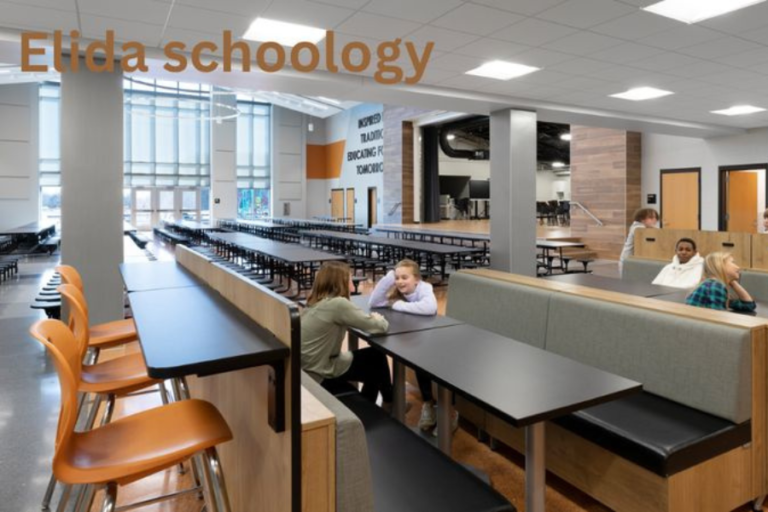
Technology has become an integral part of our everyday lives. It defines our work, interaction, and education. Integrating technology into the classroom will lead to many positive results. It provides students with a skill set that will be useful in the future while making learning more exciting and effective. Let’s start by discussing five points that support the idea that technology is essential in education today.
- Enhanced Engagement and Interactive Learning
The technology application is not only a tool for the students to tune in but also an instrument for teachers to develop more interesting lessons. Resources such as whiteboards in digital format, as well as educational software, make learning enjoyable and exciting. They allow students to connect and work with the material that other learning methods cannot achieve. For example, a history lesson can be brought to life by a virtual tour through ancient Rome. Simulations are great examples of how science concepts can be implemented. Students find it less complicated to keep them focused on the subject when these technologies are used.
Also, group projects using digital tools can have multiple benefits, such as enhancing teamwork and communication skills. Interactive learning also affects critical thinking since students handle and solve problems in real time. Technology, on the whole, improves the process because it creates a more hands-on and interactive learning environment. Sometimes, implementing technology means using writing services to inspire and analyze complex assignments. But which companies can you trust? Is SpeedyPaper legit? Seek honest reviews and integrate new technology solutions into your educational process.
- Personalized Learning Pathways
Technology allows teachers to individualize education according to each pupil’s requirements. Since digital tools allow learning to adjust to individual speeds and learning styles, learning adapts to different people. The online platforms have plenty to offer, as they provide explanations using different methods, which include videos and quizzes. Hence, the students can learn in the way they are more comfortable with.
These customized teaching methods ensure that students can excel in their fields of study at their own pace. At the same time, it highlights the areas for improvement, developing the most effective individual’s work style. Personalized learning pathways are of great value for pupils, who might not be able to cope easily with traditional classroom settings.
- Facilitating Collaborative Learning Environments
Technology is the main force that defines where students can unite in teamwork and collaboration. A digital platform such as an online forum or project management tool will allow students to collaborate on projects or assignments from anywhere. Through such means, learning is not restricted to the classroom environment only; it can occur in different places and at different times.
The online learning tools also allow the sharing of ideas, which helps form a learning community in which the learners support each other. Through group work, students develop vital life skills such as communication, leadership, and the tolerance to cooperate and work as a team. Technology also helps collaborate, where students, teachers, and students work together. Teachers can keep students abreast of their progress and provide the necessary feedback and guidance in real time, thus rendering the learning process more involving and interactive.
This educational model is capable of preparing students for the job market of the present day, which is oriented toward teamwork and digital literacy. Furthermore, it forms the feelings of community and belonging among the students. Technology can provide interactive learning spaces that utilize diversity, sustain attention, and are oriented toward individual development. By the way, the best collaboration between students and professors is possible through mobile applications. So, check the best apps every student should use. They are worth your attention
- Enhancing Critical Thinking and Problem-Solving Skills
Let’s discuss how technology can boost your critical thinking and even improve problem-solving skills. Digital resources, like interactive simulations and problem-based learning applications, give students a glimpse of the world and its problems, which they need to analyze and decide on ways to solve. This is reflected in how coding assignments foster critical thinking and resilience as students seek a solution via trial and error.
Also, online research allows students to appraise the sources, synthesize information, and arrive at their conclusions. Introducing such learning tools into the curriculum makes learning more fun and will enable students to use what they already know in class. They allow students to ask questions, look for new ways to solve problems, and consider different aspects of the problem. This method excludes students from being mere information recipients and invites them to participate actively in the learning process.
- Fostering Creativity and Innovation
Integrating technology into education is essential to unleashing students’ creative and innovative potential. Digital tools and platforms have given birth to digital art and music, built websites, and developed applications, a combination of limitless possibilities for creative expression. These practices not only acquaint students with novel forms of creativity but also allow them to experience and discover their interests in unimaginable ways.
For example, video editing software can transform a basic project into a world-class cinematic work, and 3D printing technology can build students’ prototypes that enable them to see and touch their innovations. Programming and game development platforms also train students in technical skills, practical problem-solving, and creative storytelling.
Keep an eye for more latest news & updates on Buzz!



